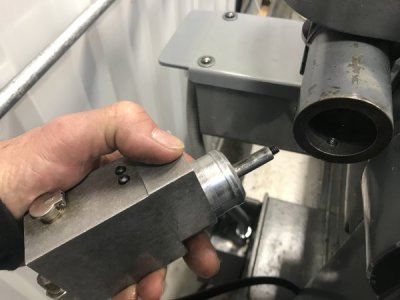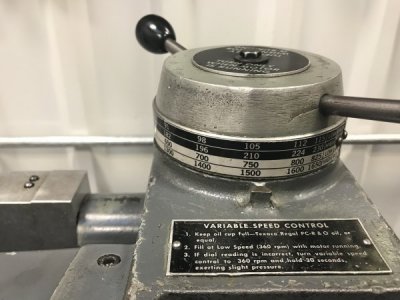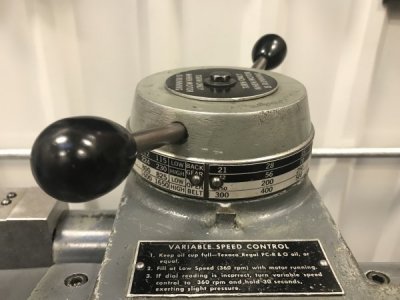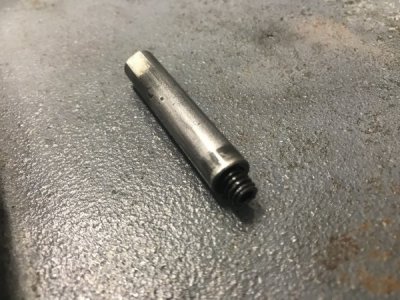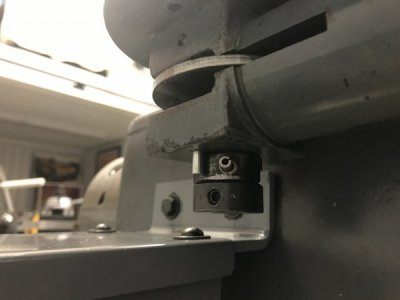- Joined
- Jan 8, 2017
- Messages
- 38
Ok I have a question on the variable-drive. I’ve looked over many threads and haven’t found an answer to my question so here it goes.
First I bled this thing every way I could find Instructions too. I gave up and ordered new seals and packing. It has the newer, I think, unit with the square master cylinder not the round one. After the new seals and bleeding it again I think I finally got it working good.
However I can not get the dial to match the speed of the belt. After a couple of days looking at it I decided to take the top of the variable-drive apart and try to figure it out.
So I found the push rod that rides on the cam is adjustable with a set screw in the end. (See pictures) I’m not sure if this is a stock piece. Seems kinda hokey that the set screw would push on the piston. The Manuel I have shows the old style round master and it looks like the pushrod is not adjustable. Is this the right piece?
Anyway, when I adjust the push rod so that the cam runs the full distance around, it will push the drive too far. It will go so far on the high speed side the belt will run off the pulley.
I bought a tach to check the rpm and I have adjust the low speed nut on the variable drive pulley to 42 RPMs and then adjusted the push rod until I get 230 RPMs. This is great however the dial does not match up to the RPMs. When I set the dial to 42 RPS at the slow speed it tops out about 210 RPM on the dial.
Am I missing something? The only thing I can think of is that the cam is wrong and ramping up too fast and pushing the rod too far too soon. But I can’t imaging anyone changing the cam, but who knows.
Thanks for any help.
